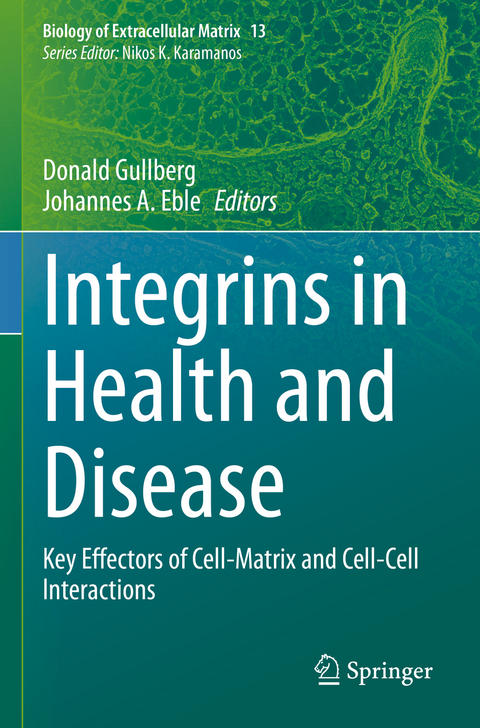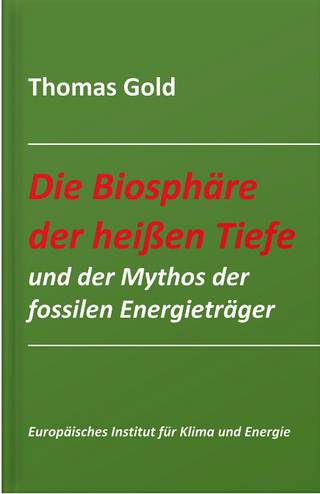
Integrins in Health and Disease
Springer International Publishing (Verlag)
978-3-031-23783-6 (ISBN)
Integrins are heterodimeric cell surface receptors which anchor cells to different extracellular matrix proteins or act as cell-cell receptors. They play pivotal roles not only across a wide range of physiological processes including tissue morphogenesis, wound healing, and regulation of cell growth, but also in numerous pathological conditions such as autoimmunity, infectious disease, and carcinogenesis.
This book aims to provide readers a summary of the most important integrins and their respective biological functions. Readers will learn about knockout- and animal models to study the functionality of key collagen-, laminin-, and nephronectin-binding integrins. Additionally, the role of integrins in pathological tissue remodeling in joints and in developing and diseased cardiac tissue are discussed. Reviews of the current knowledge of the role of integrins in tissue and tumor fibrosis, angiogenesis and tumor progression are an important part of this work. Finally, the bookdiscusses integrins in the context of the immune system, how to target integrin-ligand interactions with antibodies, and the role of integrins as receptors for bacterial and viral cell invasion.
Both experienced researchers and clinicians, as well as PhD students who wish to study the extracellular matrix and cell adhesion molecules will find "Integrins in Health and Disease - Key Effectors of Cell-Matrix and Cell-Cell Interactions" authoritative, easily accessible, and vastly informative.
The series Biology of Extracellular Matrix is published in collaboration with the American Society for Matrix Biology and the International Society for Matrix Biology.
Donald Gullberg has a BSc in Chemistry from Uppsala University Sweden and gained his PhD on a thesis entitled "Structural and functional characterization of collagen receptors on primary rat hepatocytes and cardiac fibroblasts" in 1990 under the supervision of Prof. Kristofer Rubin at the Department of Medical and Physiological Chemistry. During 1990-1992 both he and Marion Kusche-Gullberg conducted postdoctoral research with Professors John and Lisa Fessler at Molecular Biology Institute, UCLA. In his laboratory the ITGA11 was identified and characterized in 1990´s. He was appointed to a professorship at University of Bergen Department of Biomedicine in 2004 and has continued to study ITGA11 in the context of tissue and tumor fibrosis. He has spent two inspiring sabbaticals at UCSF (with Prof., MD Dean Sheppard 2010-2011, with Prof. PhD Valerie Weaver 2017-2018).
After having studied biochemistry at the University of Tübingen, Johannes A. Eble gained an intense training on extracellular matrix and collagen-binding integrins during his doctorate thesis at the Max Planck-Institute of Biochemistry in Martinsried close to Munich. In 1994, he gained his doctorate degree from the Ludwig Maximilians-University, Munich, under the Prof. Dr. Klaus Kühn's supervision. During 1995-1998, he intensified his knowledge of integrins under Prof. Martin Hemler's supervision at the Dana Faber-Cancer Institute of Harvard Medical School in Boston, where he developed the technique of recombinant expression of soluble integrins, especially of the laminin-332-binding ITGA3 integrin. After his return to Germany, he habilitated at the University of Münster in 2004. In 2008, he was appointed to a professorship of vascular matrix biology at the University of Frankfurt within the Excellence Cluster Cardio-Pulmonary System. Since 2014, he heads the Institute of Physiological Chemistry and Pathobiochemistry of the University of Münster. Although his scientific focus still pivots around integrins, his view on cell adhesion and migration has widened to integrin agonists and antagonists, the former being recombinant integrin-binding mini-collagen and mini-laminin-332, the latter being integrin-blocking snake venom toxins. Moreover, redox regulation of integrins and cell-matrix contacts is also included in his research portfolio.
Part 1: Knockouts and animal models.- Integrins 1beta1 and 2beta1 - The generalist collagen receptors.- Roles for Integrin 3beta1 in Development and Disease.- Part 2: Fibrosis& Cancer.- Integrins: Key targets in tissue fibrosis and tumor stroma.- Integrins in Cardiac Form, Function and Disease.- Integrin 8 and its ligand nephronectin in health and disease.- v integrin-dependent TGF activation in cancer: a brief update.- Part 3: Human disease.- a11b1, a mesenchymal collagen-binding integrin with a central role in tissue- and tumor fibrosis.- Integrins in pathological tissue remodelling of joints.- 4 integrins in immune homeostasis and disease.- beta2-integrins in immunity: new roles for old players.- Structure and function of the leukocyte integrin Mbeta2.- Part 4: Integrins in hemostasis, and immune control.- Platelet integrins: Critical mediators of haemostasis and pathological thrombus formation.- Integrins as receptors for bacterial and viral pathogens.
| Erscheinungsdatum | 11.03.2024 |
|---|---|
| Reihe/Serie | Biology of Extracellular Matrix |
| Zusatzinfo | XII, 472 p. 1 illus. |
| Verlagsort | Cham |
| Sprache | englisch |
| Maße | 155 x 235 mm |
| Themenwelt | Naturwissenschaften ► Biologie ► Biochemie |
| Naturwissenschaften ► Biologie ► Mikrobiologie / Immunologie | |
| Naturwissenschaften ► Biologie ► Zellbiologie | |
| Schlagworte | Cell adhesion • Cell-cell receptors • Cell-extracellular matrix-signaling • Cell Migration • Cell Surface Receptors • extracellular matrix • immunity • Integrins • Intracellular invasion of pathogens • Tumor fibrosis |
| ISBN-10 | 3-031-23783-8 / 3031237838 |
| ISBN-13 | 978-3-031-23783-6 / 9783031237836 |
| Zustand | Neuware |
| Haben Sie eine Frage zum Produkt? |
aus dem Bereich


